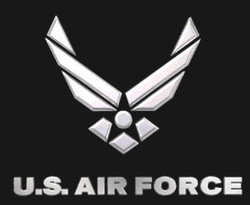Sun, Jan 03, 2010
 Fifteen F-22 Raptors are scheduled to deploy to Andersen Air
Force Base, Guam, in January 2010 for approximately three months.
The fighters and associated personnel will deploy from the 90th
Fighter Squadron at Elmendorf AFB, Alaska.
Fifteen F-22 Raptors are scheduled to deploy to Andersen Air
Force Base, Guam, in January 2010 for approximately three months.
The fighters and associated personnel will deploy from the 90th
Fighter Squadron at Elmendorf AFB, Alaska.
The deployment supports U.S. Pacific Command's theater security
packages in the Western Pacific and follows the recent departure
from the theater of two deployed squadrons of F-22s that also were
supporting U.S. PACOM's TSP. The fighters and personnel deployed to
Andersen AFB, Guam, and Kadena Air Base, Japan, completed their
redeployment in October 2009.
The F-22 is a transformational combat aircraft that can avoid
enemy detection, cruises at supersonic speeds, is highly
maneuverable, and provides the joint force an unprecedented level
of integrated situational awareness. The Advanced Tactical Fighter
entered the Demonstration and Validation phase in 1986. The
prototype aircraft (YF-22 and YF-23) both completed their first
flights in late 1990. Ultimately the YF-22 was selected as best of
the two and the engineering and manufacturing development effort
began in 1991 with development contracts to Lockheed/Boeing
(airframe) and Pratt & Whitney (engines). EMD included
extensive subsystem and system testing as well as flight testing
with nine aircraft at Edwards Air Force Base, Calif. The first EMD
flight was in 1997 and at the completion of its flight test life
this aircraft was used for live-fire testing.

The program received approval to enter low rate initial
production in 2001. Initial operational and test evaluation by the
Air Force Operational Test and Evaluation Center was successfully
completed in 2004.

Based on maturity of design and other factors the program
received approval for full rate production in 2005. Air Education
and Training Command, Air Combat Command and Pacific Air Forces are
the primary Air Force organizations flying the F-22. The
aircraft designation was the F/A-22 for a short time before being
renamed F-22A in December 2005.

As part of continuing force posture adjustments to address
worldwide requirements, U.S. officials continue to deploy
additional forces throughout the Western Pacific. This is the
latest example of the flexibility U.S. forces have to meet their
ongoing commitments and security obligations throughout the pacific
region.
More News
From 2023 (YouTube Edition): New Propulsion Scheme Optimized for AAM Applications Founded in 2017 by Eric Bartsch, Pat Anderson, and Erik Lindbergh (grandson of famed aviation pion>[...]
During The Initial Climb, The Engine Began To Operate Abnormally And, After About Three Seconds, Experienced A Total Loss Of Power On October 29, 2025, about 1820 Pacific daylight >[...]
Aero Linx: Women in Aviation International Women in Aviation International is the largest nonprofit organization that envisions a world where the sky is open to all, and where avia>[...]
“We’ve paid for the cable line’s repair for the customer and have apologized for the inconvenience this caused them...” Source: Some followup info from an A>[...]
“We have long warned about the devastating effects of pairing optimization. Multiple times over many months, we highlighted how schedule manipulation, unbalanced schedules, a>[...]
 Classic Aero-TV: VerdeGo Debuts VH-3 Hybrid-Electric Powerplant
Classic Aero-TV: VerdeGo Debuts VH-3 Hybrid-Electric Powerplant NTSB Prelim: Grumman American Avn. Corp. AA-5B
NTSB Prelim: Grumman American Avn. Corp. AA-5B ANN's Daily Aero-Linx (12.02.25)
ANN's Daily Aero-Linx (12.02.25) Aero-News: Quote of the Day (12.02.25)
Aero-News: Quote of the Day (12.02.25) Aero-News: Quote of the Day (12.03.25)
Aero-News: Quote of the Day (12.03.25)






